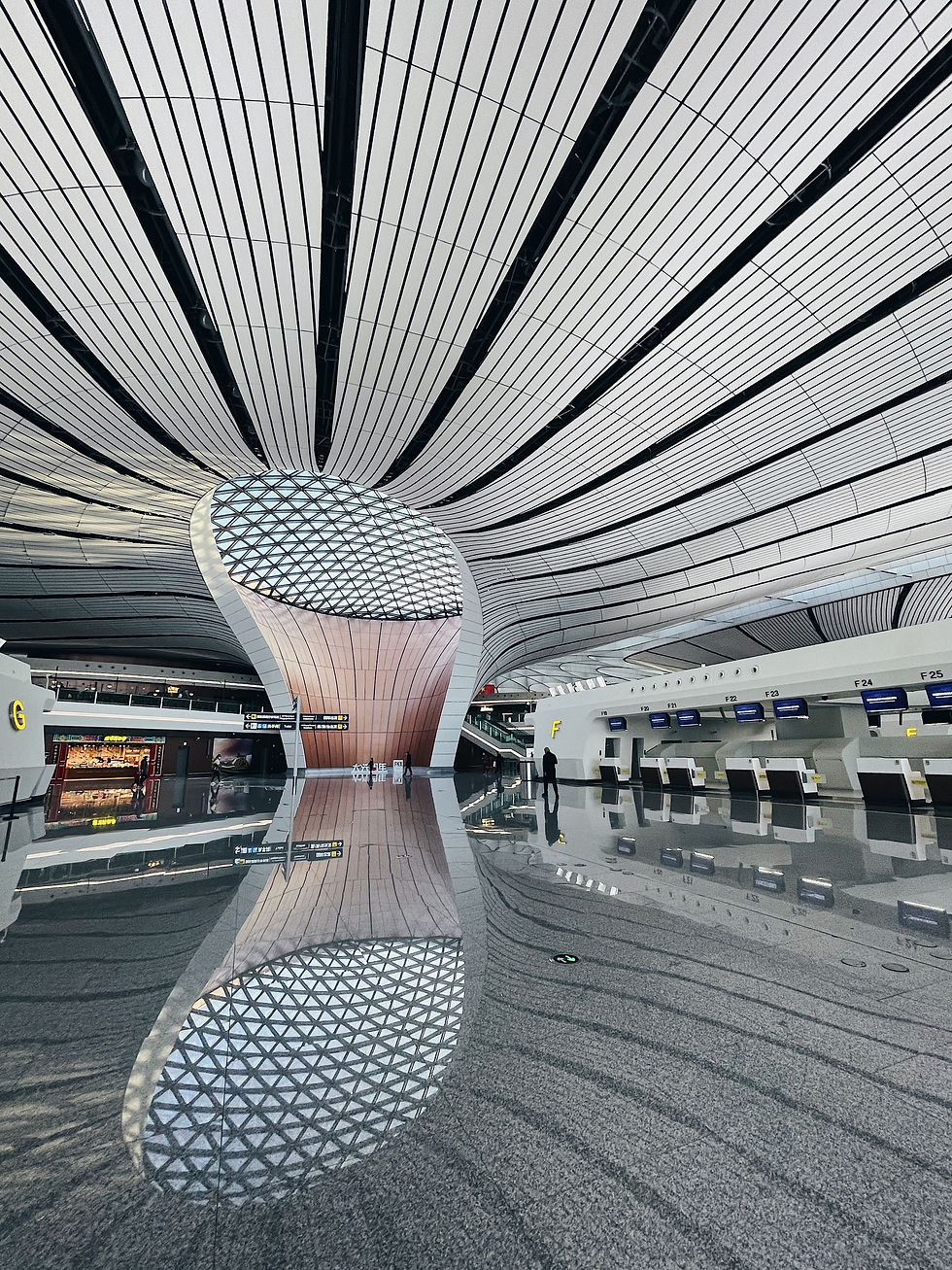Adapting to Changing Travel Trends: Flexible Airport Design for Post-Pandemic Travel
- Gebler Tooth Architects

- Sep 19, 2023
- 2 min read
The COVID-19 pandemic has left an indelible mark on the aviation industry, prompting a reassessment of everything from passenger safety protocols to airport design. Airports are preparing for a new era of post-pandemic travel. This post explores how airport architects and designers are adapting to changing travel trends by creating flexible airport designs that cater to evolving passenger needs and expectations.

Reimagining Passenger Flows

One of the most significant changes in airport design post-pandemic is the reimagining of passenger flows. Traditional airport layouts often led to crowded corridors and bottlenecks at security checkpoints. Architects are now working on designs that allow for more space and flexibility, ensuring passengers can maintain social distancing while moving through terminals.
The adoption of contactless technology is also playing a vital role in streamlining passenger flows. Mobile check-in, digital boarding passes, and touchless payment options are reducing physical contact points and making the airport experience more efficient.
Health and Safety First
Health and safety have become paramount concerns for travellers. Airport architects are responding by integrating health-conscious features into their designs. This includes the installation of touchless hand sanitising stations, improved ventilation systems, and the incorporation of UV-C disinfection technology.
In addition to these measures, some airports are exploring the use of antimicrobial materials in high-touch areas such as handrails and elevator buttons. These innovations not only enhance safety but also provide peace of mind to passengers.
Modular and Adaptable Spaces
Flexibility is key in the post-pandemic airport design landscape. Architects are incorporating modular elements that can be easily reconfigured to accommodate changing passenger demands. For instance, seating arrangements in gate areas can be adjusted to create more space or allow for social distancing when necessary.
Additionally, the creation of adaptable spaces within terminals is gaining traction. These spaces can serve multiple functions, from waiting areas to pop-up retail or dining spaces, depending on the current needs of passengers.

Technology Integration

The pandemic accelerated the adoption of technology in airport operations. Designers are now focusing on seamlessly integrating technology into the passenger experience. This includes interactive wayfinding kiosks, real-time updates on wait times, and even augmented reality apps that provide virtual tours of the airport.
Furthermore, the use of biometrics for check-in, security, and boarding is becoming more common, reducing the need for physical documents and contact with airport staff.
Sustainability and Resilience

Sustainability remains a top priority in airport design. Architects are incorporating eco-friendly materials, energy-efficient lighting, and green building practices into their designs to reduce the environmental impact of airports. Furthermore, resilience to future disruptions, whether they be health-related or environmental, is a critical consideration in design.
In conclusion, the post-pandemic era has brought about a transformation in airport design, with a focus on flexibility, health and safety, and technological innovation. Airport architects are rising to the challenge, creating spaces that not only meet current passenger needs but also adapt to the unpredictable nature of the travel industry. As we move forward, these flexible airport designs will play a crucial role in ensuring a safe and seamless travel experience for all. Travellers can look forward to more efficient, adaptable, and health-conscious airport environments in the years to come.



Comments